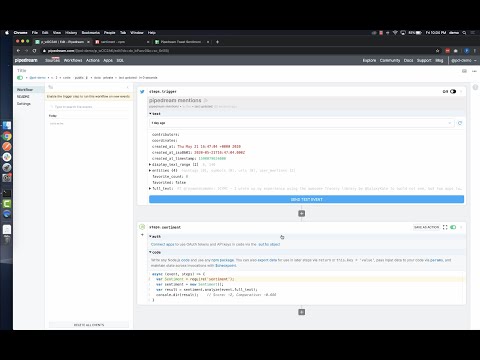What do you want to automate
with Google Sheets and Raindrop?
Prompt, edit and deploy AI agents that connect to Google Sheets, Raindrop and 3,000+ other apps in seconds.
Trusted by 1,000,000+ developers from startups to Fortune 500 companies
Popular Ways to Connect Google Sheets with Raindrop#
Popular Google Sheets and Raindrop Triggers#
Emit new event each time a comment is added to a spreadsheet.
Emit new event each time a row or rows are added to the bottom of a spreadsheet.
Emit new event each time a row or rows are added to the bottom of a spreadsheet.
Popular Google Sheets and Raindrop Actions#
Add a single row of data to Google Sheets. See the documentation
Add multiple rows of data to a Google Sheet. See the documentation
Get all values or values from a range of cells using A1 notation. See the documentation
Overview of Google Sheets#
The Google Sheets API allows for the creation, reading, updating, and deletion of data within Google Sheets, enabling a robust platform for spreadsheet management and data manipulation. Through Pipedream, you can craft serverless workflows that respond to various triggers, such as webhook events, emails, or scheduled times, to interact with Google Sheets. This synergy can automate reporting, synchronize data across applications, manage inventory, track leads in a CRM, or even conduct survey analysis by updating and retrieving sheet data on the fly.
Connect Google Sheets#
import { axios } from "@pipedream/platform"
export default defineComponent({
props: {
google_sheets: {
type: "app",
app: "google_sheets",
}
},
async run({steps, $}) {
return await axios($, {
url: `https://www.googleapis.com/oauth2/v1/userinfo`,
headers: {
Authorization: `Bearer ${this.google_sheets.$auth.oauth_access_token}`,
},
})
},
})
Overview of Raindrop#
Raindrop.io is a versatile bookmarking service that lets users save, organize, and share web content. With its API, you can automate the management of bookmarks, collections, and tags, thus streamlining the way you handle internet resources. Automating these tasks with the Raindrop API on Pipedream opens the door to personalized content curation, enhanced collaboration, and efficient information retrieval workflows. Think syncing saved articles across platforms, generating reports on saved links, or even triggering actions based on new content.
Connect Raindrop#
import { axios } from "@pipedream/platform"
export default defineComponent({
props: {
raindrop: {
type: "app",
app: "raindrop",
}
},
async run({steps, $}) {
return await axios($, {
url: `https://api.raindrop.io/rest/v1/user`,
headers: {
Authorization: `Bearer ${this.raindrop.$auth.oauth_access_token}`,
},
})
},
})
Related Videos#



Community Posts#


